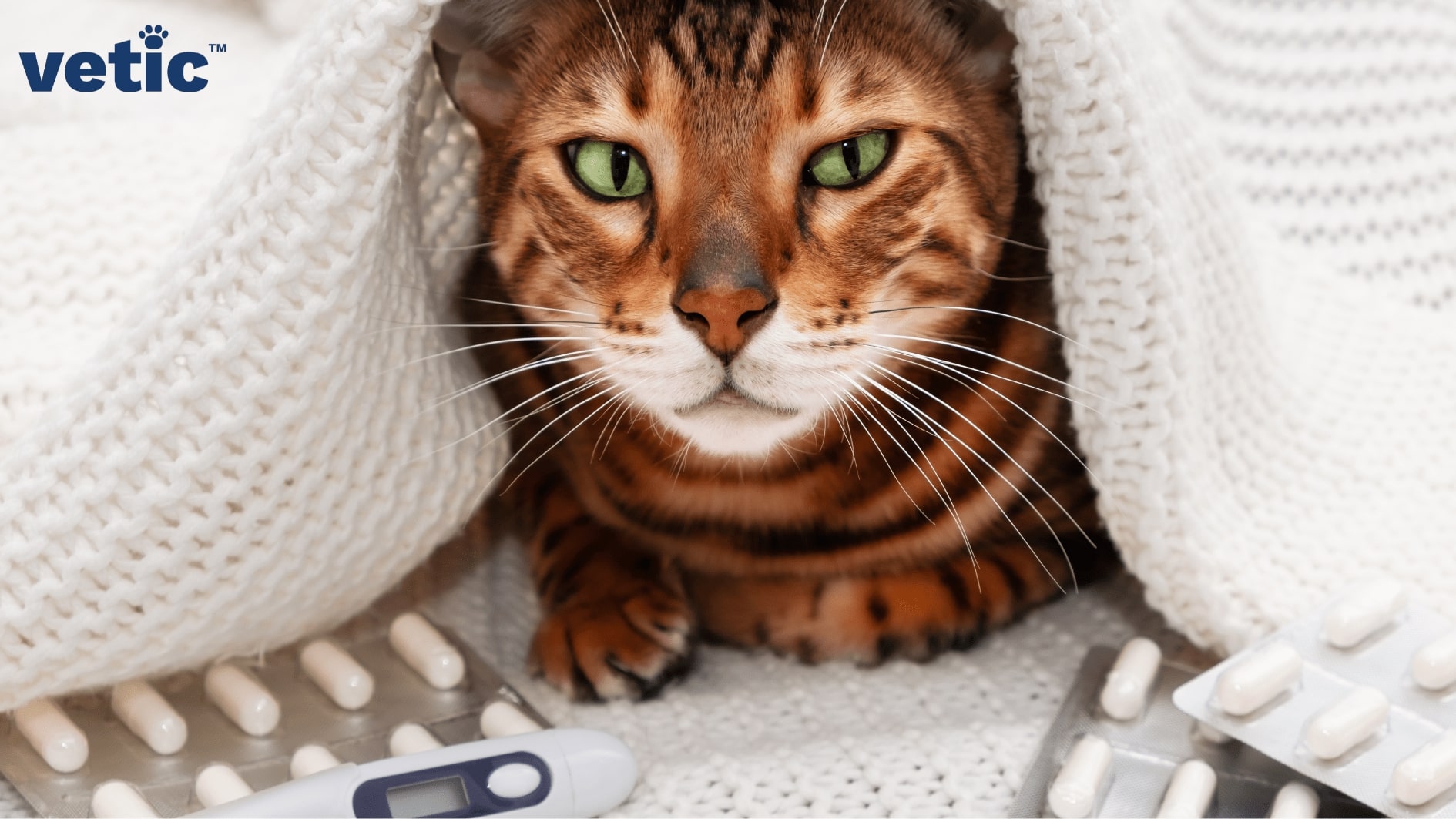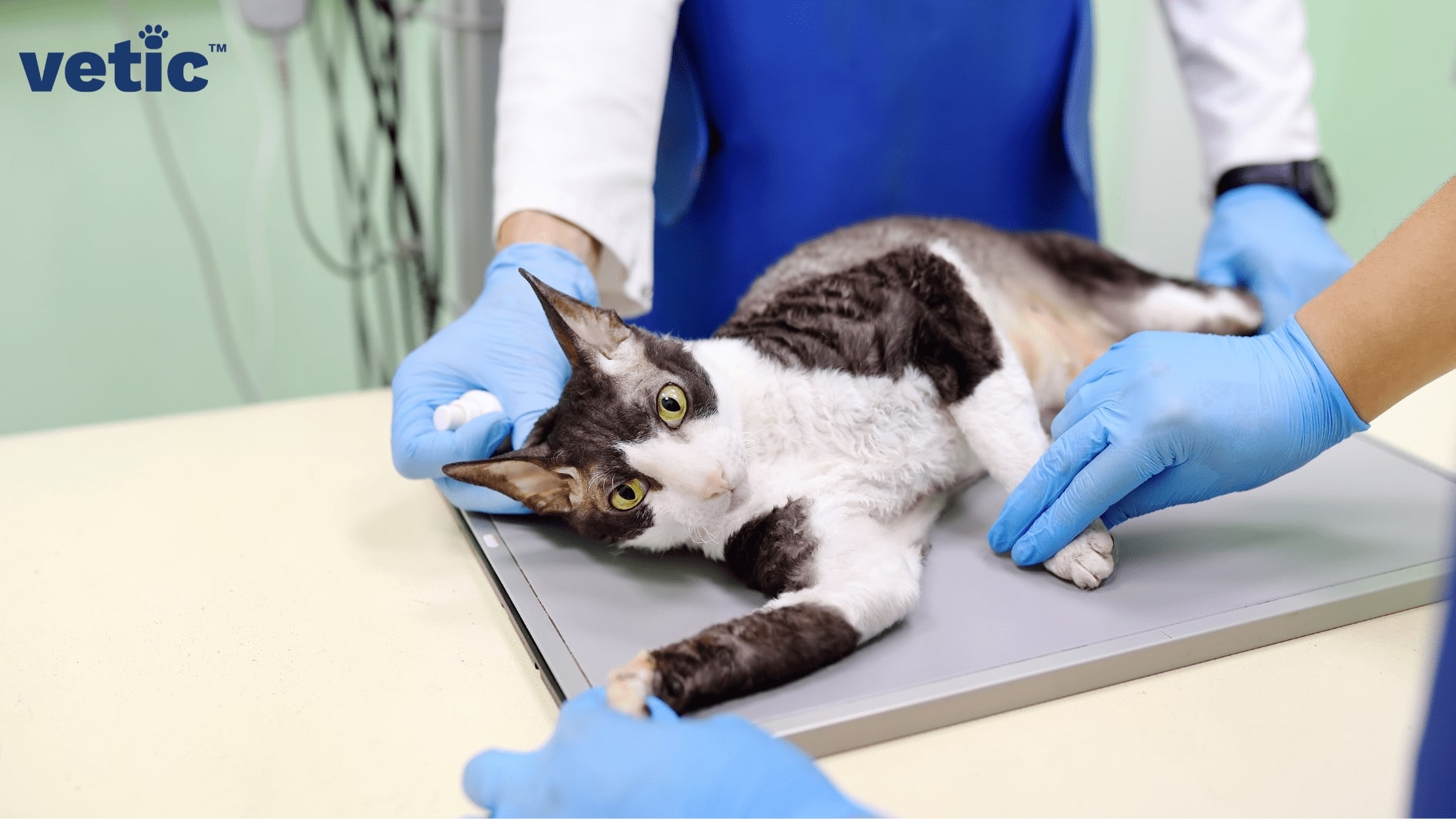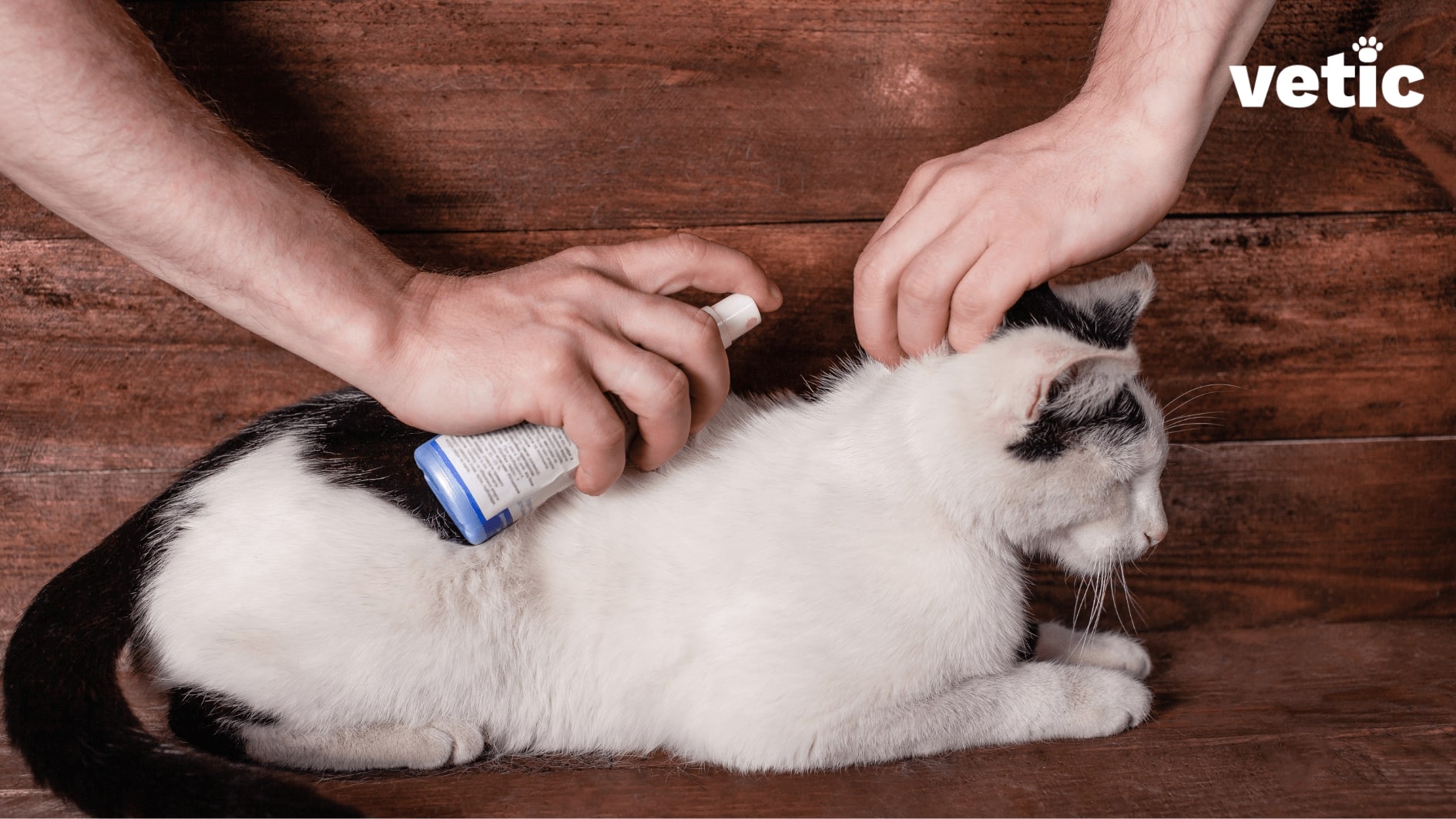“Why is my cat hiding in a corner?” “Does my cat have a fever?” “Why is my cat lethargic?” “Why is my cat not eating?”
These are all important questions almost every cat parent asks at least once. And “Haemoprotozoa in cats” could be the unwelcome yet correct answer!

These are all common signs of parasitic blood infection or haemoprotozoa in cats –
- Lethargy
- Lack of appetite
- High temperature
- Anaemia
And when a cat feels sick, they avoid food and water. Vets often report rapid dehydration in cats that show these symptoms for even 48 hours.
If your cat is showing one or more of these signs and symptoms, seek out the best vet clinic near you ASAP.
Does My Cat Have a Fever?
The most common question cat parents ask is “How do I know if my cat has a fever?”
Determining fever in cats can be difficult since cats are elusive creatures. Whenever they feel sick, they tend to hide somewhere dark and cool. So, other than their absence during their meal times, other fever symptoms go unnoticed.
The only way to confirm a fever in cats is by taking their temperature rectally. That is a daunting task and most cat parents need expert help to accomplish it. Take your cat to the animal hospital or veterinary clinic nearby if you suspect abnormal temperature.
Normal temperature in cats should range between 100 and 102.3 degrees Fahrenheit (38.1 and 39.2 degree Celsius). Any temperature above 103 degrees Fahrenheit is considered a fever.
Why Does My Cat Have a Fever?
Fever is not a disease. It is a sign of an infection or multiple infections. Determining the nature of these infections is not always possible by physical examination only. The rising cases of parasitic infections in cats are the main reason the best veterinarians near you recommend urgent blood tests.
Your cat may have a fever due to psychogenic reasons (a sudden change of environment), external wounds, chronic inflammation in the body or due to an infection. Infections such as Mycoplasmas, Babesia and Bartonella also cause recurrent fever in cats along with loss of appetite, weight loss and anaemia.
Without determining the nature of the infection(s) prescribing the correct course of medication is impossible.
Why is My Cat Not Eating?
While we often don’t because we “don’t feel like eating,” it is not very common in the animal world to refuse food without a physiological cause. Yes! Sudden changes in the environment and other stress such as a cat being in heat do cause loss of appetite, but when you combine inappetence with lethargy and anorexia, you have a serious problem at hand.
If your cat has been refusing food for over 24 hours it’s time to rush them to a veterinarian. You can check out emergency veterinary clinics in your area if it’s beyond the usual working hours of animal hospitals. Do not ignore the loss of appetite in cats since dehydration can set in quite rapidly.
Your cat may not be eating because they have a fever, nausea, stomach pain and other internal discomforts. Instead of guessing, you should speak to your veterinarian ASAP.
What Medicine Can I Give My Cat For Fever?
Let’s answer this one with all the medicines you absolutely SHOULDN’T give if your cat has a fever –
- Crocin (Paracetamol)
- Ibuprofen
- Aspirin (acetylsalicylic acid)
- Diclofenac
- Acetaminophen

In fact, almost all over-the-counter fever medicines that humans use are toxic for cats even in paediatric doses. Avoid giving your cat any medication for fever or pain without talking to your veterinarian.
Search for a 24/7 veterinary clinic near you for emergencies such as these. They can examine your cat and give you the correct dose of fever medicine that’s safe for cats. Always give medicines that a veterinarian has prescribed for your cat.
What Are The Most Common Causes Of Fever In Cats: Haemoprotozoa in Cats
The most common cause of fever in cats is a viral infection such as calicivirus or feline rhinotracheitis virus. However, if your cat has been properly vaccinated, their chances of contracting a viral disease are low.
The next possible cause can be external wounds such as bites, punctures or lacerations. If they have infected wounds or even severe blunt trauma they can have a high body temperature.
The other cause, which is becoming more common by the day in India, is parasitic blood infection in cats. These are microorganisms that live in a cat’s blood and cause rapid breakdown of the RBCs (red blood cells).
These can be protozoa like Mycoplasmas and Babesia. Or, it can be bacterial, such as Bartonella.
Cats across the world have several such parasitic blood infections. However, these three broad ones are most prominent in India at the moment.
Does My Cat Have a Parasitic Blood Infection?
If your cat is showing all of the signs we have mentioned above, then there’s a good chance that it might have a blood-borne parasitic infection. Nonetheless, there is no way to confirm the diagnosis without tests like RT-PCR.
Once you take your cat to the vet, they will recommend blood tests that will include tests for blood-borne diseases including Mycoplasmas, Babesia and Bartonella.
Modern testing methods are highly sensitive and they can detect multiple variants of all parasitic blood infections with accuracy.
What Is the Treatment for Mycoplasma in Cats?
Mycoplasmosis (caused by mycoplasma) in cats is a common parasitic infection in cats. It is a form of feline infectious anaemia. Healthy, vaccinated and dewormed cats often do not show any signs of mycoplasmosis.
Immunocompromised cats, kittens and senior cats can show severe signs including complete loss of energy, severe anaemia, jaundice and enlarged spleen.

When detected early, your cat may respond to oral antibiotics and supplements. They will require extensive supportive care and maintenance therapy since the infection takes a hefty toll on the internal organs.
Severely affected cats almost always require fluid therapy along with IV antibiotics. Some cats with severe haemolytic anaemia may require blood transfusion as well. Blood typing is a must before blood transfusion. Always speak to a well-established vet hospital with experienced veterinarians for blood transfusion.
Sadly, there is no complete cure for mycoplasmosis. Even a “cured” cat may remain a life-long carrier of the microorganism throughout their life. However, it is entirely possible for the affected cat to live a normal, healthy and happy life without any complications if the disease is diagnosed and treated early.
What is the Treatment for Feline Babesia?
Babesia is a protozoan transmitted through tick bites. Apart from Babesia felis, at least 5 other types of Babesia can affect cats. Feline babesiosis is a relatively new disease being diagnosed in India. However, due to the large number of ticks in dogs and other animals, Babesia in cats is spreading quickly.
Feline babesiosis is almost always diagnosed by RT PCR and other blood tests.
The treatment of early-stage feline Babesia requires one or more anti-protozoal drugs along with supportive medication for anaemia, pain and inflammation. In the later stages, when the disease affects the internal organs and causes severe hemolytic anaemia, aggressive treatment becomes necessary. It may include IV fluids, IV medicines and blood transfusion.
Most cats can recover from babesiosis with intense treatment and care. However, they will remain carriers of the disease for the rest of their lives. They will require continuous monitoring and testing.
What Is the Treatment of Bartonella Infection in Cats?
Treatment of Bartonellosis in cats may require multiple antibiotics along with supportive supplements and medicines. However, this is quite rare since most cats do not succumb to Bartonella infection.
Only immunocompromised cats, very young kittens and senior cats show the symptoms of bartonellosis or cat scratch fever.
Treatment of Bartonella or cat scratch fever in cats can be difficult since the bacteria often develops resistance to the multiple antibiotics used against it. You must complete the course of antibiotics recommended by your veterinarian to prevent a recurrence. Cat scratch fever (Bartonella infection) in cats is curable.
How to keep your cat safe from Mycoplasma and Babesia?
Mycoplasma and Babesia are flea and tick-borne diseases, respectively. The only way to protect your cat is by keeping them free from ticks and fleas.
You can choose between the numerous tick and flea treatment options including spot-ons, sprays and powders for cats. Be sure to repeat their tick and flea treatment as recommended by the vet.

If your cat is an indoor or indoor-outdoor cat, limit their time outdoors. Check them every time they come home. Brush them frequently.
Take them to the vet for regular health checkups. Diagnosing sickness in cats including signs of anaemia and issues of the liver and spleen requires veterinary expertise.
If your cat has a fever, lethargy, anorexia and anaemia, you should consider getting their blood sample tested for possible parasitic blood infections. Remember, early diagnosis improves your cat’s chances of recovery drastically.
Here are the most commonly asked questions about Mycoplasma in cats, Babesia felis and Cytauxzoonosis in cats:
Why is my cat lethargic?
Lethargy in cats can be due to fever, infection, anaemia, or parasitic blood infections like Mycoplasmas, Babesia, or Bartonella.
Why is my cat not eating?
Loss of appetite in cats is often linked to fever, internal discomfort, or infections, requiring immediate veterinary consultation.
How can I tell if my cat has a fever?
Cats with fever often hide and avoid food. Confirm by taking their rectal temperature, ideally with veterinary assistance.
What causes fever in cats?
Cat fevers can result from infections, external wounds, chronic inflammation, or parasitic infections like Mycoplasma, Babesia, and Bartonella.
What is the treatment for Mycoplasma in cats?
Treatment includes antibiotics, supportive care, and possibly blood transfusions for severe cases. Early detection improves outcomes significantly.
How is feline Babesia felis treated?
Feline Babesia treatment involves anti-protozoal drugs, supportive care for anaemia, and in severe cases, IV fluids and blood transfusions.
How can I prevent haemoprotozoa infections in my cat?
Prevent infections by keeping your cat free of ticks and fleas using treatments like spot-ons, sprays, and powders, and ensuring regular vet check-ups.
What causes Mycoplasma, Babesia felis, and Cytauxzoonosis in cats?
These infections are caused by parasitic organisms transmitted primarily through tick and flea bites. Mycoplasma is transmitted by infected fleas. Babesia felis and Cytauxzoonosis in cats is caused by infected tick bites.
How can I prevent Mycoplasma, Babesia felis, and Cytauxzoonosis in cats?
Regular tick prevention measures, like spot-ons, sprays, powders, and frequent veterinary check-ups, can prevent these infections effectively

